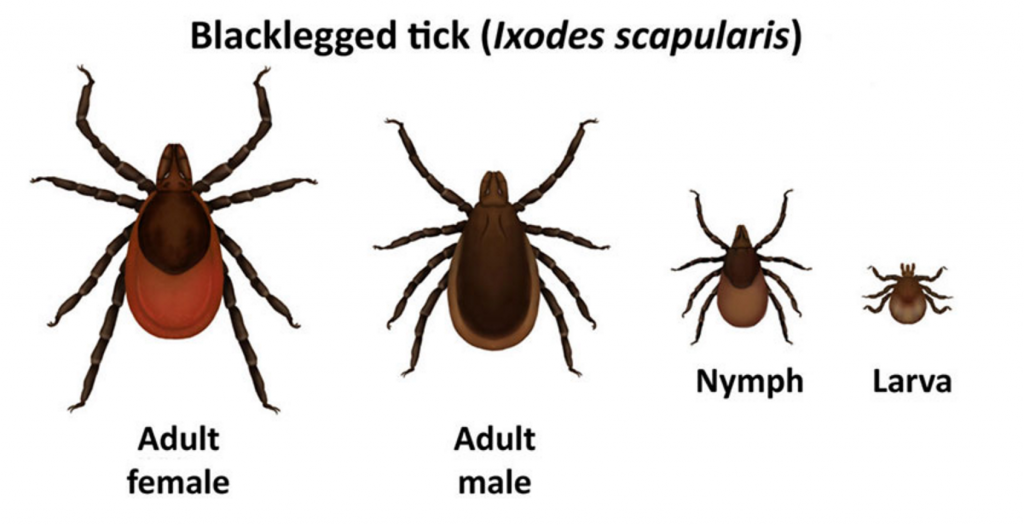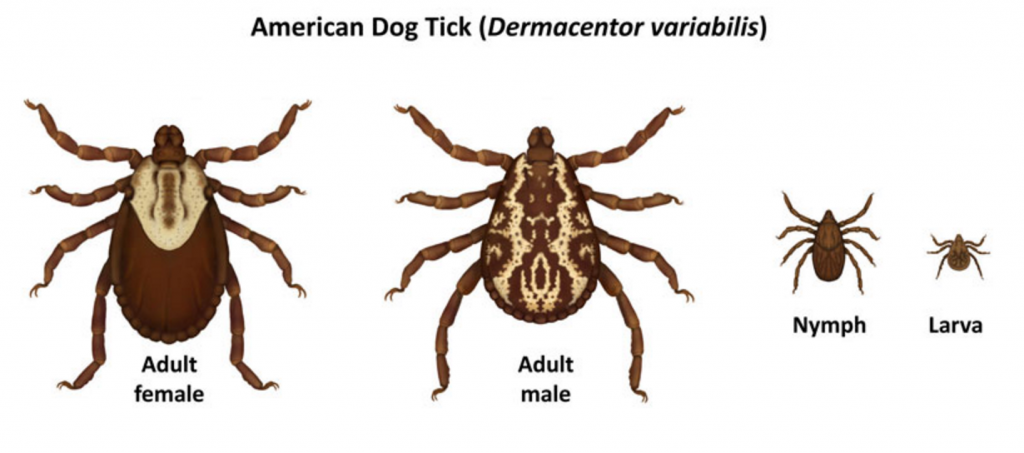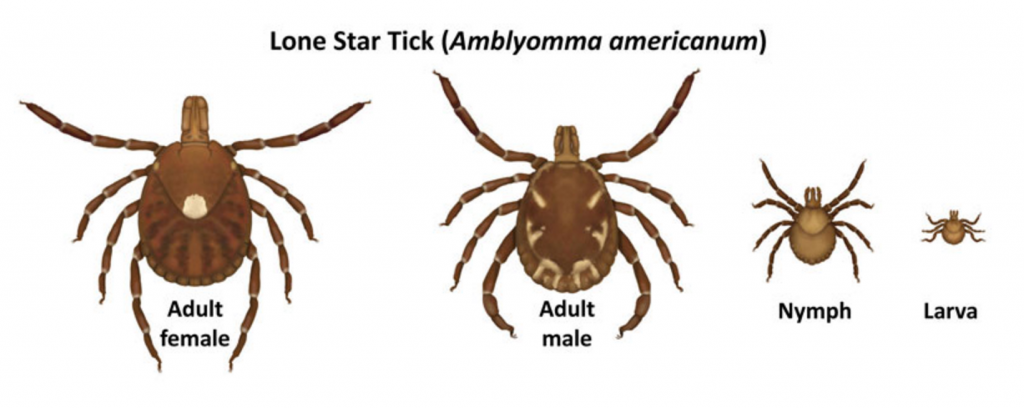An increasing number of tick-borne disease cases are being reported in Ohio. While Lyme disease is the most common, incidents of Rocky Mountain spotted fever and Ehrlichiosis have been reported as well.
The increasing tick populations and a rise in tick-related illnesses are a cause for concern, especially after a mild winter. With the once-rare populations becoming more and more common, it’s a good idea to get yourself acquainted with the tick varieties that transmit diseases in Ohio.
That’s not to say every single tick is carrying a disease, but certain types are known to carry specific diseases.
Blacklegged Deer Tick

Although it was believed, for many years, there weren’t any blacklegged deer ticks in Ohio, they have established populations in 30 to 40 counties in the southern and eastern parts of the state, according to Ohio State University’s College of Food, Agricultural and Environmental Sciences. This tick is known for carrying and transmitting Lyme disease.
After attaching to a host and slowly sucking blood for several days, it drops off and prepares for the next stage of life. However, if the host animal has Lyme disease, the deer tick may ingest the pathogen and become infected. At its next feeding, it can transmit the disease to its new host. A single tick has the ability to transmit the infection to many hosts throughout its life. Typically, deer ticks live for up to two years.
Tips
Appearance. Note that deer ticks look different from one life stage to the next and adult males vary from adult females. Also, note their size variation. Adult deer ticks are approximately the size of a sesame seed, nymphal ticks are only the size of a poppy seed. Given how small they are, it would be easy to mistake one for a mole or freckle.
Stage. Adult females and nymphs are the most likely to bite humans.
High risk. The risk of human infection is greatest in the late spring, summer and early fall. However, adult ticks may search for a host anytime temperatures are above freezing.
Distribution. Deer ticks are widely distributed in the northeastern and midwestern states.
Saliva. A tick secretes small amounts of saliva, numbing the area where it attached itself. If the tick isn’t visible, it can easily go unnoticed.
24 hours. If you remove a tick within 24 hours, you reduce your chance of getting Lyme disease because it takes time for the bacteria to be transferred. The longer the tick is attached, the more you put yourself at risk. This is why it’s always a good idea to check yourself and your children after being outdoors in wooded areas or even fields.
Lyme disease symptoms. Lyme disease can cause an erythema migrans rash that looks like a bullseye and flu-like symptoms including fever, chills, fatigue headache and muscle and joint aches. It’s important to note the rash occurs in 70 to 80 percent of infected people and appears anywhere from three to 30 days after being bitten, according to the Centers for Disease Control and Prevention. Antibiotics can cure most cases of Lyme disease.
American Dog Tick

The American dog tick, also called the wood tick, is another tick to keep an eye out for this summer. It has been responsible for a rise in cases of Rocky Mountain spotted fever in recent years.
Tips
Appearance. Unlike the deer tick, which can be very difficult to find, the wood tick is much larger and easier to identify. Like the deer tick, wood ticks look different from one life stage to the next and adult males and females vary in appearance.
Stage. Adult females are most likely to bite humans.
High risk. You’re most likely to be bitten during the spring and summer.
Distribution. The American dog tick is widely distributed east of the Rocky Mountains.
Rocky Mountain spotted fever symptoms. Early symptoms of the infection include a severe headache and high fever, followed by a rash on wrists and ankles a few days later. If it’s caught early, the disease can be treated successfully with antibiotics.
Lone Star Tick

The Lone Star tick is responsible for an increased number of Ehrlichiosis cases in both residents and dogs in southern Ohio. It is also known for transmitting southern tick-associated rash illness (STARI), which has symptoms similar to Lyme disease.
Tips
Appearance. Although this tick, too, looks different from one stage to the next and its male and female forms vary, the adult females are easily distinguished by a white dot or “lone star” on their backs.
Stage. Adult females and nymphs are most likely to bite humans.
High risk. The Lone Star tick is known as a very aggressive tick that bites humans.
Distribution. The range and abundance of the Lone Star tick have rapidly increased over the last 20 to 30 years. While it is known for living in the southeastern and eastern portions of the United States, it has been found as far north as Maine and as far west as Texas and Oklahoma.
Saliva. The saliva from a Lone Star tick bite can cause irritation, redness and discomfort at the bite site. However, these symptoms do not necessarily indicate infection.
Ehrlichiosis symptoms. Symptoms occur one to two weeks after being bitten and include fever, headache, fatigue and muscle aches.
STARI symptoms. Like Lyme disease, STARI is accompanied by a bullseye rash, fatigue, headache, fever and muscle pains. Symptoms can be resolved with antibiotics.
According to the CDC differences between STARI and Lyme Disease include:
- Patients with STARI are more likely to recall a tick bite than patients with Lyme disease.
- The time period from the time of the tick bite to onset of a skin lesion was shorter among patients with STARI (6 days, on average).
- STARI patients with an erythema migrans rash were less likely to have other symptoms than Lyme disease patients with a rash.
- STARI patients were less likely to have multiple skin lesions, had lesions that were smaller in size than Lyme disease patients. Additionally, lesions were more circular in shape and had more central clearing.
- Following antibiotic treatment, STARI patients recovered more rapidly than Lyme disease patients.
Reaction
If you identify a tick you removed to be one of the three outlined above, watch for disease symptoms and seek medical attention immediately if they appear.
You can also take steps towards preventing tick bites by wearing long sleeves and pants or applying a repellent before venturing into wooded areas. Find more information on preventing and treating tick bites here.
Related Content
Resources
- Centers for Disease Control and Prevention
- The University of Maine Cooperative Extension
- Ohio State University Extension











